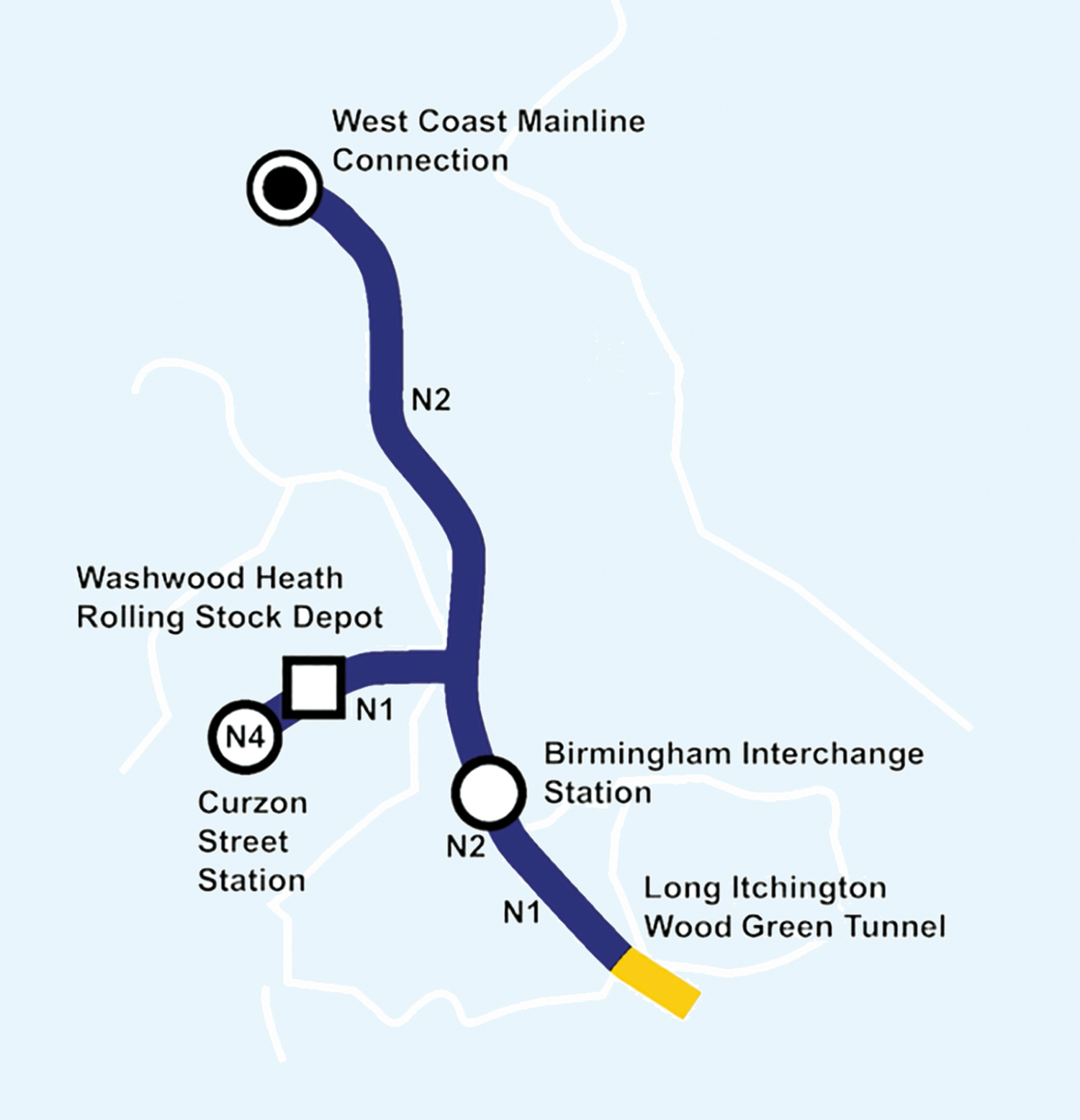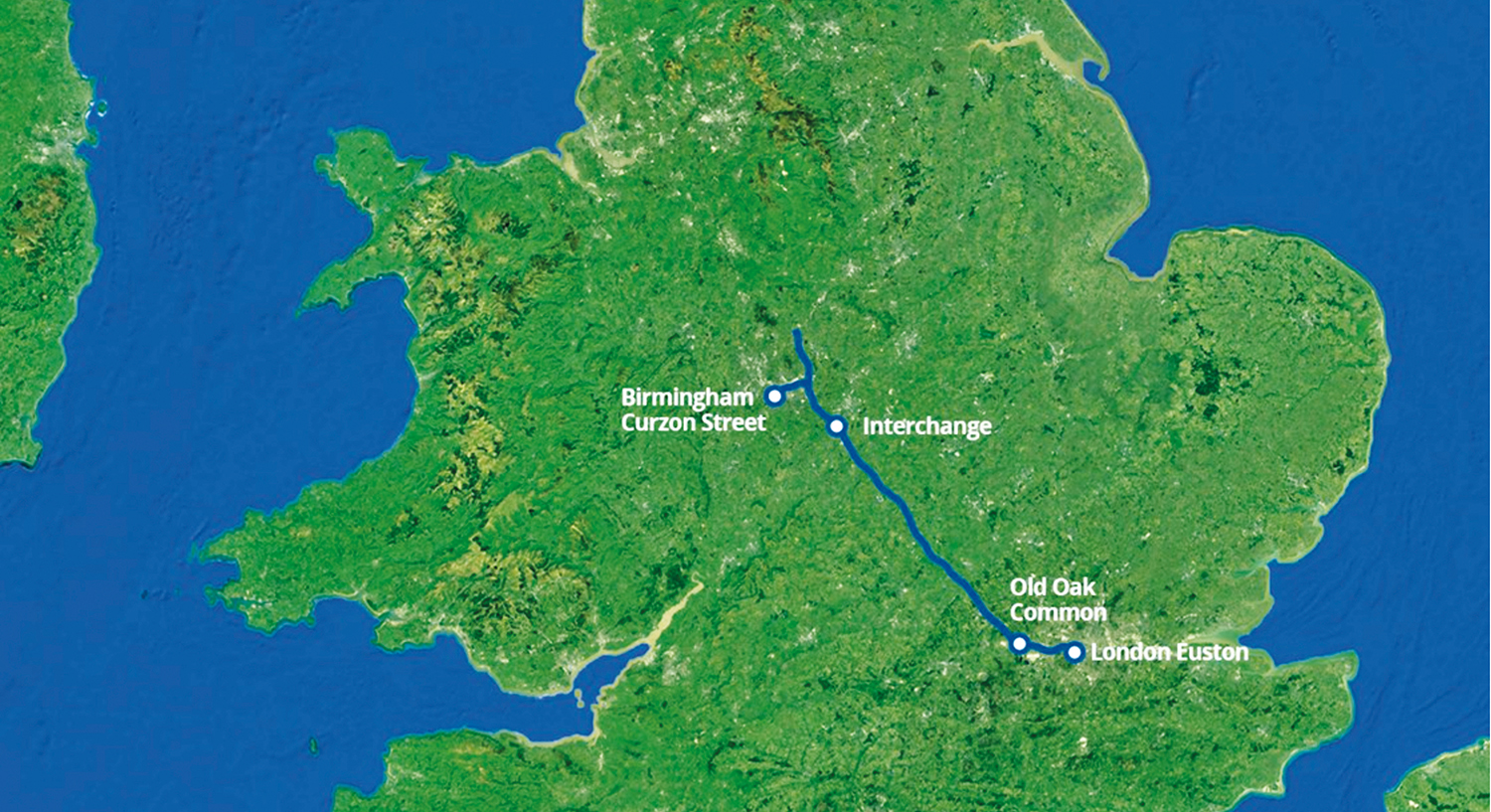
Martin Holland explains how the HS2 project gave an opportunity to improve collaboration and planning of works using a web-based geographic information system and database.
A web-based geographic information system (GIS) is helping High Speed Two (HS2) manage its construction works and all the associated enabling and utility works.
The HS2 project requires many organisations to coordinate their work activity teams at hundreds of locations, giving the perfect opportunity to improve collaboration and planning of works with the GIS linked to a work activity database.
A bold step was taken by the enabling works contractor responsible for the northern section of the phase one route to ‘ban and bin’ the spreadsheets used by many to plan and coordinate works. Instead, they took the opportunity to move to a ‘real time’ single data source for work activity planning, aided by clear visuals showing in calendars, and GIS mapping for current and future works.
The initial benefit of using a user-friendly set of pre-configured map view options in GIS to connect the HS2 land database information directly to the same database platform for works planning was halving the time taken by the planning and coordination meetings. Activity clashes that remained unresolved by set dates also reduced by over 75%. Unresolved activity clashes were assigned clear action leaders.
Furthermore, any work team in any location had access on their phones or handheld devices to see the same, real-time information and contact details for work teams, as well as the land status details to confirm authority to access land was in place.
Using web-based systems enabled all the interfacing organisations directly to input and view works, plan to avoid clashes and join coordination meetings via Microsoft Teams.
As Covid-19 lockdown restrictions came in, all CDM meetings were held online, without any disruption to the effectiveness of the meetings due to proven systems and protocols.
Background and industry context
With the extensive scope and scale involved in the construction of HS2, the challenge of efficiently coordinating the hundreds of work activities, thousands of surveys and many major construction and utility diversions was the ideal opportunity to go beyond what was previously done and to make the best use of technology to provide robust and effective planning, management, monitoring and assurance for the work sites.
The enabling works contract (EWC) on the northern section of HS2 phase one (also known as Area North) is delivered by the Laing O’Rourke Murphy joint venture (LMJV).
LMJV was the first HS2 enabling works contractor on site. This covered over 80km of route, on over 2,500 land parcels with many hundreds of work locations where works interfaced with multiple clients including HS2, utilities, highways and Network Rail.

HS2 instructed LMJV to take the role of CDM principal coordinator for Area North. LMJV was also to develop further the LM Spatial GIS system and CDM coordination meetings to enable all the dutyholders in Area North to use and provide transferable knowledge for HS2 works to maintain and develop the use of GIS for effective and efficient coordination and collaboration as required by the Construction (Design and Management) Regulations 2015 (CDM).
CDM 2015 requires ‘dutyholders’, as defined by the regulations, to cooperate and communicate with each other and to coordinate their work.
HS2 was the client and principal designer for the project works. It apointed principal contractors for CDM-notifiable work and other organisations and contractors to undertake non-CDM work and to assist HS2 and other dutyholders to coordinate works. HS2 established a land acquisition and boundaries process and supporting database and geographical information system (GIS), as used on other major linear projects
The land database information and a GIS viewer system used on HS2 are in formats familiar to many who have worked on major projects based in offices. However, the opportunity to format the database inputs and functionality of GIS viewers for
frontline and site-based operation teams and CDM work activity coordination was identified as an area to build upon, and for knowledge-sharing across industry.
Approach to surveying
As the enabling works commenced on the ground in 2017, and the number of live sites and survey activity locations increased, so did the finalising of locations of utility diversions and other permanent work locations.
It became apparent that the established industry norm of huge planning meetings, with the use of ‘smart boards’ for sketch-ups of potential clashes raised by all the participants and the meeting outputs of rows of spreadsheets updated with thousands of columns and rows, was very soon going to be overwhelmed by the sheer volume of data and speed needed to identify, review, accept or avoid clashes of work activities.
Although smart boards were a step forward in capturing images of sketches, they were not interactive and required many cross-references to land data and work activities listed on multiple spreadsheets. Many of these did not line up in time and boundary locations, leading to further ambiguity as to who was in control of any location, or who could be contacted if a work activity was to overlap with another.

If a new and more efficient way was not found, the aim of keeping as many work teams separated in time and/or place, in order to remove and reduce work hazards and enable efficient working, would be lost.
To give a sense of scale, for Area North alone, the HS2 works covered over 80km of work sites on over 2,500 land acquisition parcels (LAPs) where:
- each LAP where works or a survey was to take place needed to be approved;
- not all works fell under the construction regulations/CDM;
- many works by multiple clients were in close proximity – HS2, utilities, highways;
- there were multiple principal contractors; and
- there was emerging scope and constant change as designs developed.
As various layers of information relating to work areas became available, and were entered in the GIS viewer, it became apparent just how many stakeholders and communities would be interacting with each other.
Late in 2018 the project director laid down the challenge of banning within six months the use of spreadsheets for any work activity planning and coordination. This was the catalyst to develop the land database and GIS – a time-enabled GIS viewer system was up and running to view work activities logged into a single database and in use at the Area North CDM clash resolution meetings.
Lessons learned and successes
Systems alone do not ensure success. Engagement and appreciation of all who design, develop and use the systems must be noted and communicated regularly, with support to new users to enable them to gain access and benefit from the functionality of the system.
To do this a number of levels and steps were identified to develop systems and meeting protocols rapidly.
1. Define a few champions to keep the pulse and pace
This is just the starting team, which can call on the subject matter experts for systems, IT, legal, delivery and commercial. This team drafted the outline strategic, tactical and operational goals.
Learning point: This team does not have all the answers but it has a level of authority to call in resources. Attendance at very short weekly update meetings must be mandatory. Make and deliver on commitments, be brief, bright and get on with it. Some may join the development team of subject matter experts, but are accountable for the weekly update, progress and deliverables.
2. Form, explain and explore meeting
When the subject matter experts are identified, draw a launch meeting with them and the champions and explain the reasons why this development is so important. Not just a ‘nice to have’ but a legal duty under CDM to plan/manage/monitor/coordinate. In short: who, what, when, where? Today, tomorrow and way ahead.
Learning point: Not everyone will agree with a scope of what needs to be included. Some managers will be solely focused on ‘the contract’ and will not see their statutory duties under CDM. The next step of ‘explore’ is where additional training or information can be presented to give collective insights.
This meeting needs time and facilitators to enable discovery to benefit the collective team. Look at what is working well, what is missing and what is needed to achieve or support the goals for coordination.

3. Discovery meeting
This came the week after the ‘form, explain and explore’ meeting, when the subject matter experts presented what was currently best practice and more detailed steps needed to go beyond what was previously thought possible.
Learning point: At this point the leadership and commercial teams need courage to call in additional resources to plant the seed for growth and return.
An example was that the director made a commitment to ask for another GIS expert. It was not fully known exactly what that specialist could do but it was recognised that this extra capacity, and potential innovator, was needed for speed of development and resilience. This was agreed very quickly and was a huge step forward.
Learning point: Note the way different people have different data preferences and needs. Some like lists, tables and reports. Others interact with more visual methods. Develop the systems to support as wide a group of functional needs as possible and explain why some requests cannot be accommodated.
This might be due to base system configuration limits. Some early report outputs crashed the databases due to the huge volume of land data that could be selected over a large time scale. Users became frustrated until the parameters were refined and locked down to what was really needed. Then the systems became fast again.
4. Launch the new way of CDM coordination
Supported by the leadership and their line managers, two colleagues committed a set proportion of their time away from other duties to deliver the initial introduction sessions. They also delivered training on procedures, issued guidance notes and held ‘open surgery’ Q&A and further training sessions after CDM clash resolution meetings held every two weeks. They also acted as a point of contact in between meetings.
To avoid issues being carried over to the next meeting, outputs of the meetings in GIS map snapshots, with short notes and defined action leaders, enabled local teams to focus on areas where follow-up action was required.
Learning point: Having visible points of contact ensured that new or existing users with questions or ideas could raise them directly and have consistent support or feedback as needed.
One of the early commitments was always to hold the meeting at the same time and always have deputies to chair the meetings and deliver the support service. This continuity enabled rapid uptake of the systems and made savings in other meetings or with people not sure who to contact with a query.
“For Area North alone, the HS2 works covered over 80km of work sites on over 2,500 land acquisition parcels.”
Some organisations have limitations on downloading apps or programmes, but these web-based systems did not present blockers and enabled participants to interact directly.
5. Keep refining the inputs and outputs based on delivery requirements
Make the system data input as simple as possible and more reliable than a spreadsheet. This makes life easier for the many doing the work before designing reports for the few who assure the works.
Learning point: The aim of the data-entry database must be simple, accessible, reliable and recoverable for those inputting data. Make sure this new way of capturing the records is easier and gives access to more benefits than the previous methods.
For CDM activity coordination, the ability to enter planned works against a trusted database of land records – which is then displayed in a calendar with potential activity clashes immediately visible – enabled inputters to select other dates immediately to avoid work clashes. This made work planning and clash avoidance possible at the earliest opportunity, without having to attend meetings.
Only where a clash could not be avoided did it have to be raised at existing management meetings and, if still unresolved within the two-week window between the CDM coordination meetings, it then was visible on the GIS map as a ‘red clash’ to be allocated action leaders at a higher level.
The development and introduction of this ‘clash calendar’ has been one of the most significant functions allowing over 500 work activities and surveys to be scheduled each week. It has reduced clashes brought to the higher level by 75% every two weeks. It has more than halved the administration and time taken to log works.
Recommendations
Where there is a need for extensive collaboration or coordination for CDM or non-CDM activities, the use of master database or data hub is the foundation stone. This is the platform where clash avoidance, standard activity reports and contact lists can be built.
This makes it valuable for the data inputters and they would not now want to go anywhere else to enter or check works or contacts. From the database/data hub, the GIS mapping links can be made in clear and simple formats for sharing on handheld devices.
When starting to develop an approach like this, remember it is a bit like the space race to the moon. A commitment was made. No one knew at that point all the steps needed but, with engaged and passionate people working together and recognising the value that each and every one can bring to the process, it is possible to achieve beyond what was previously thought possible. l
Martin Holland was CDM coordination lead, Laing O’Rourke Murphy joint venture, HS2. He is now HS&E leader, Laing O’Rourke. This article is part of HS2 Learning Legacy and is reproduced by kind permission of HS2 Ltd.
Tips for the journey
The following points helped this team achieve its ‘moon mission’.
- Work out the number, duration and intensity of interfaces. Visual hot spots on a map or plan can help this evaluation.
- In developing the database and GIS viewer, take time for discovery – look for what works well for the delivery teams first, then for the assurance and reporting.
- Pair the GIS specialist with a delivery leader.
- Create a regular time and place to reflect upon discovery, suggestions and actions.
- Identify the duplications or overlaps and remove or thin them.
- Set up your activity coordination meetings to a regular pulse.
- Do NOT cancel any meetings.
- Build in resilience in the coordination meeting team, with multiple deputies.
- Roll out the strategy with visuals to act as ‘anchor points’ for when refresher briefings are made.
- Measure and show the savings (for example, time and clashes).
- Keep partners involved and dedicate clear points of contact and systems’ champions.
- Recognise and thank all involved and let them know how their ideas are developing.
- Recognise that relentless refinement is needed and have resilience to face the unknown unknowns when they do become apparent.
- Be bold in commitment to resources at the start and explain when system limitations make some requests for development not currently possible, but keep seeking solutions.






